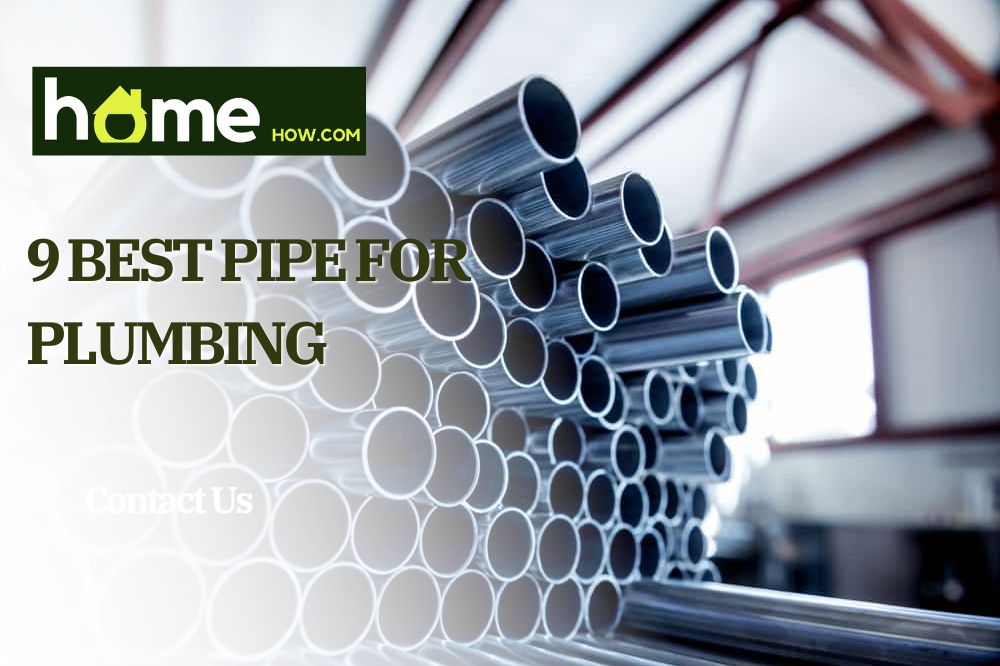You might not think it, but pipes are the cornerstone of every building we enter.
They carry everything from water and heat to gas, drainage and sewage, electrical wiring, and more. Because they do such an important job, you must invest in the best if you want long-term service with no problems like leaks or breaks.
But the thought of installing pipes can worry many people. We immediately think of bolts, screws, and water everywhere. But installing a new pipe is relatively easy. The only difficulty you have is picking the right material.
After all, once a pipe is laid, you don’t want to have to go back and excavate it later on. In this article, we’ve researched the best types of plumbing pipes that will reach all your plumbing demands.
9 Best Pipe For Plumbing
1. Copper pipes
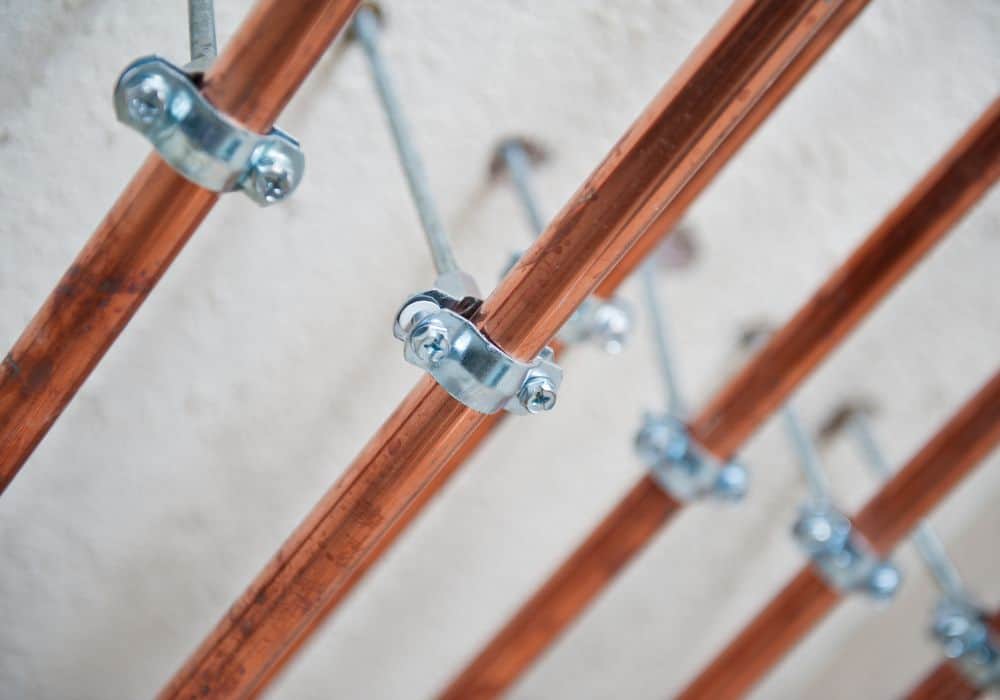
Although they appeared as early as the 1930s, copper plumbing pipe is still popular worldwide. They are often used as traditional water supply lines, heating systems, and gas pipelines.
What’s more, copper as a material has impressive corrosion resistance, making it incredibly durable, long-lasting, and rigid. It can easily carry hot materials over long distances without its structural integrity suffering.
There are two types of copper piping; a rigid copper pipe is ideal for transporting water, while the flexible copper pipe is ideal for connecting shorter plumbing systems with corners or obtuse angles.
That said, copper pipes can be much more expensive than cheaper materials like plastic. They may also need to be soldered onto fittings, often requiring a professional plumber to install and repair them.
Lastly, these pipes can also be a lot nosier, so people avoid having them running open throughout the inside of their homes.
2. PVC (Polyvinyl chloride)
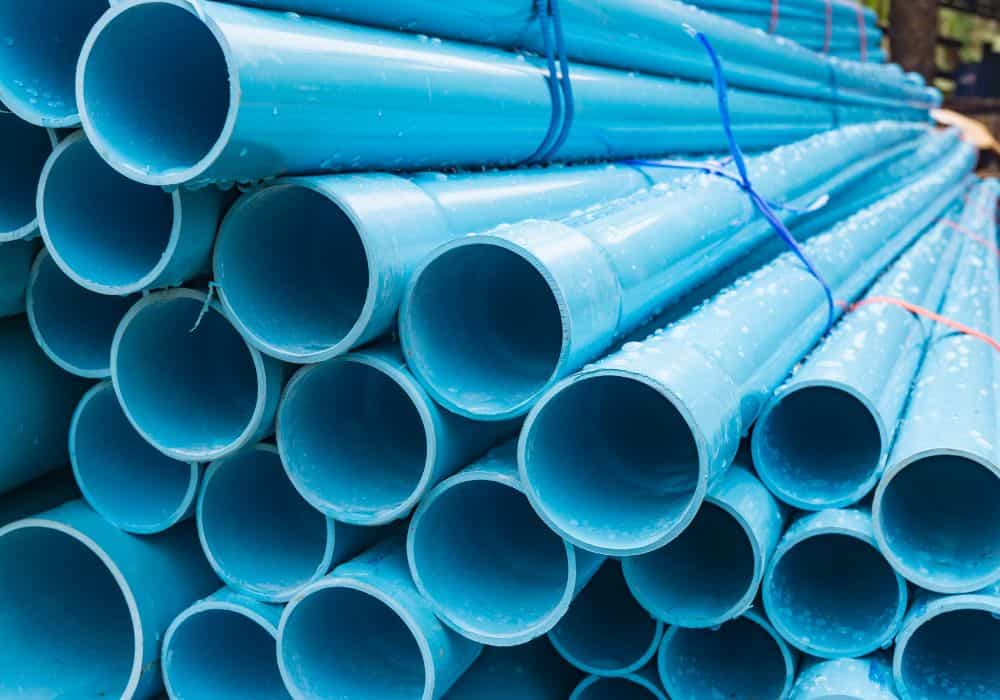
PVC is one of the most popular types of piping used in plumbing nowadays, and for a good reason. They have incredibly high corrosive resistances and anti-bio-film properties, which makes them ideal and safe for drinking water.
Promising research also suggests that they have a life-long expectancy of over 100 years, making them incredibly great value for money.
You’ll also be happy to know that installing PVC pipes is quick and easy. For example, research from The European Plastic Pipes and Fittings Association found the overall process is 30% faster than concrete pipes.
Couple the above points with PVC’s naturally cheap cost and availability, and they’re often one of the first choices for professional and rookie plumbers alike.
3. CPVC (Chlorinated polyvinyl chloride)
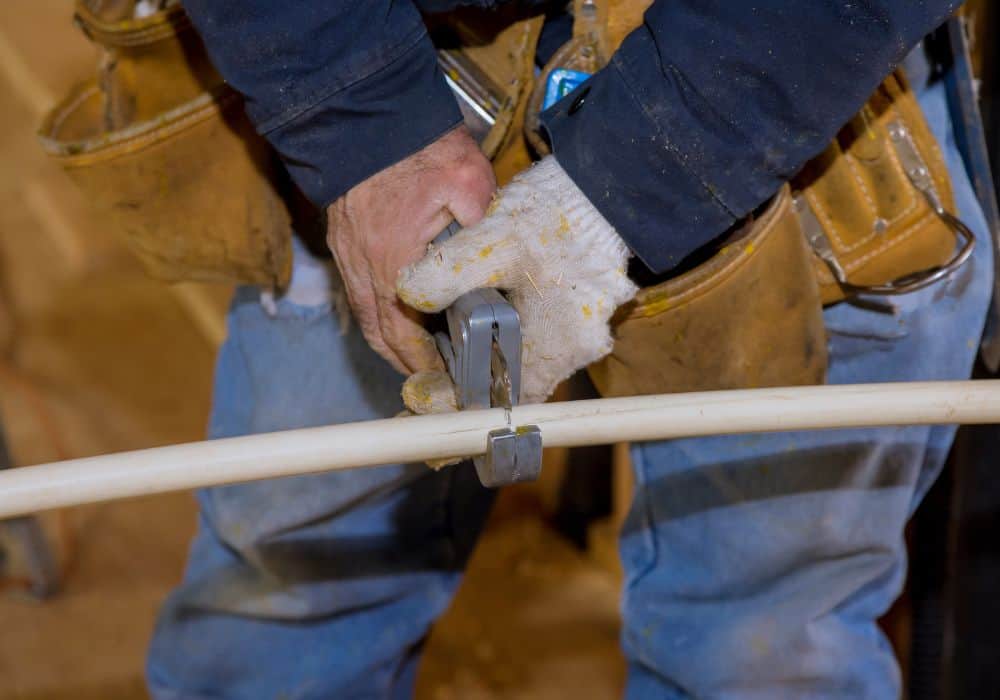
The main advantage of CPVC over PVC is that it is much more flexible and can withstand higher temperatures. That makes it an ideal plastic piping to connect heaters, vent hot air, and carry hot and cold water throughout your home.
Because of the added chlorine in its production, this material has numerous anti-corrosion resistances. And although the structure of CPVC is durable, it is incredibly lightweight, and installations are often quick and easy.
What’s more, CPVC is one of the most mass-produced types of piping worldwide and, as such, has an almost unlimited amount of fittings and fixtures that you can choose from. Rest assured, no matter what kind, size, or direction your pipes need to go, there’s a CPVC pipe on the market for you.
4. ABS pipes (Acrylonitrile butadiene styrene)
Another plastic alternative pipe is ABS, which promises more shock resistance and strength than rival PVC.
Additionally, it can hold much lower temperatures and resist breakages from freezing water. For that reason, it’s an ideal pipe around your house to connect water systems like sinks, toilets, and outdoor fixtures.
Like many plastics, ABS can potentially last a lifetime without causing you or your plumbing system any bother. The only caveat is outside –apply a light-colored coat of paint to protect it from unwanted UV rays.
5. Stainless steel pipes
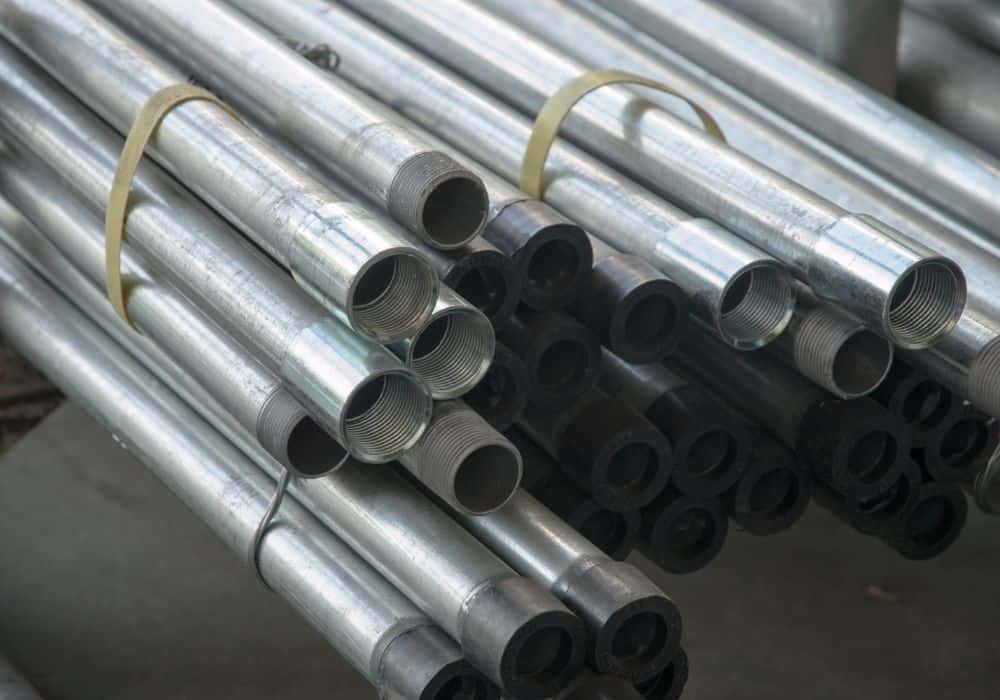
Stainless steel is one of the strongest metal materials on our list. It is corrosion, heat, and impact resistant; once you set these pipes, they are there to stay.
Not only that, but because ingredients like chromium oxide are used, stainless steel is incredibly weather resistant, making them an ideal choice for outside plumbing, especially in coastal areas with increased rainfall, moisture, and wind.
Although we often think of stainless steel as this unmovable material, many engineers can get custom-made pipes that fit and bend into any system at the production level.
But all these benefits do come at a price – literally. Despite being one of the best pipes, stainless steel does cost a premium.
6. PEX pipes (Cross-linked polyethylene)
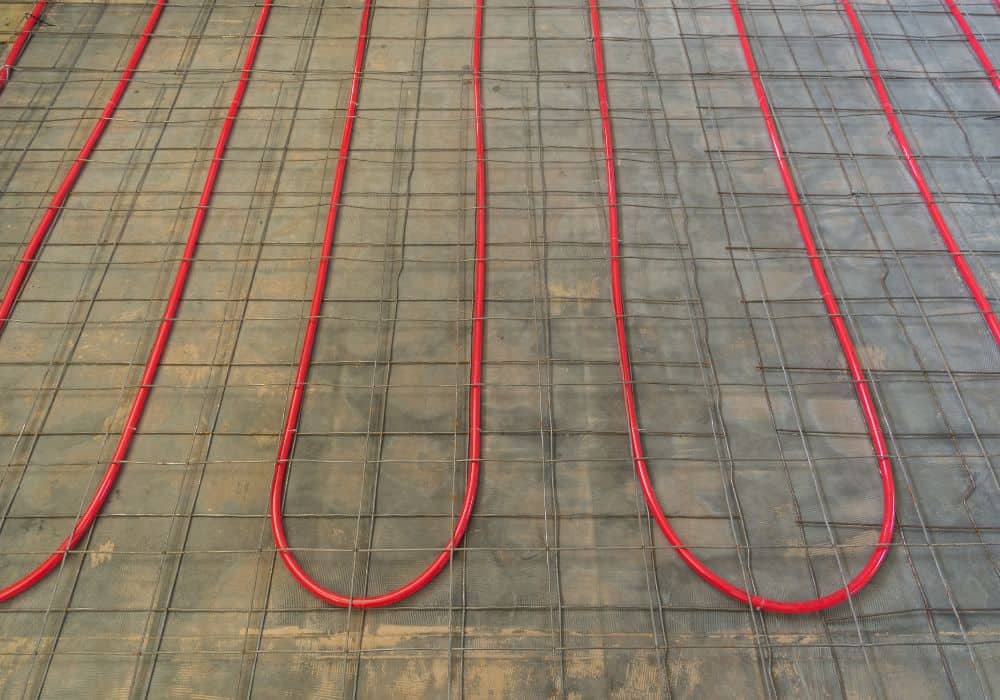
PEX is one of the most popular and best choices for all plumbing that requires some flexibility, like across bends, at awkward angles, and plumbing systems that travel horizontally and vertically.
First and foremost, it is incredibly easy to lay down and is the perfect material for beginning plumbers to work with. Attachments and connectors are easy to screw on and off at a moment’s notice.
Because of their flexibility, PEX pipes also maintain high-pressure conditions, perfect for indoor water plumbing. But that said, it can easily fit into parts of an existing system flawlessly – no need to replace everything all at once.
PEX also is one of the few materials that resist extreme cold and freezing temperatures. No matter if there’s water inside that freezes, a PEX pipe can expand appropriately and not yield to tearing or bursting. However, it can become vulnerable to UV rays and may not suit outdoor plumbing requirements.
But what seals the deal on PEX piping is the price. It is easy to make and mass-produce, dramatically reducing its cost at the checkout.
7. Brass pipes
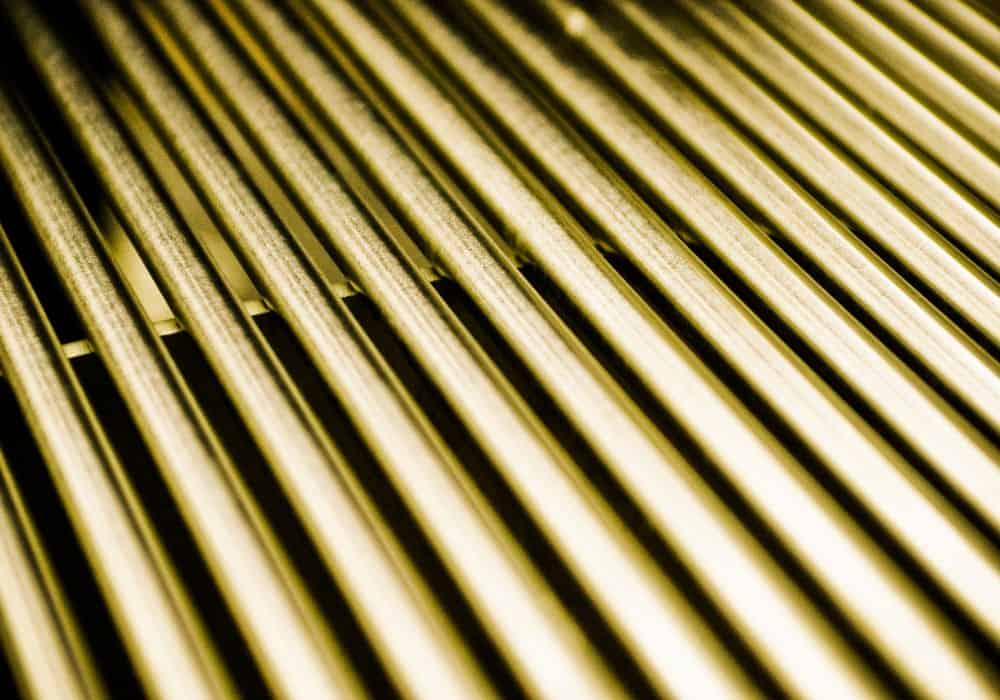
There’s something very classic about brass pipes. Although they might be older than modern plastics, they can still hold their own in many regards with indoor and outdoor plumbing.
Firstly, brass is an incredibly durable, resilient, and long-lasting metal. They won’t bend, crack or snap when compared to weaker plastics. They won’t rust on the inside either, repelling blockages.
But perhaps one of its core strengths is that brass pipes can hold and carry substances that reach extreme temperatures, including hot water, making them ideal for distributing heat and water around your home.
Furthermore, brass is one of the most malleable metals on the market, and you will find more sizes, shapes, and bends with brass than other metals like steel or cast iron.
What’s more, many people decide to go with brass because it can potentially add more money to your home’s value. There’s something very rich and beneficial to having these pipes throughout your home.
8. Galvanized pipes
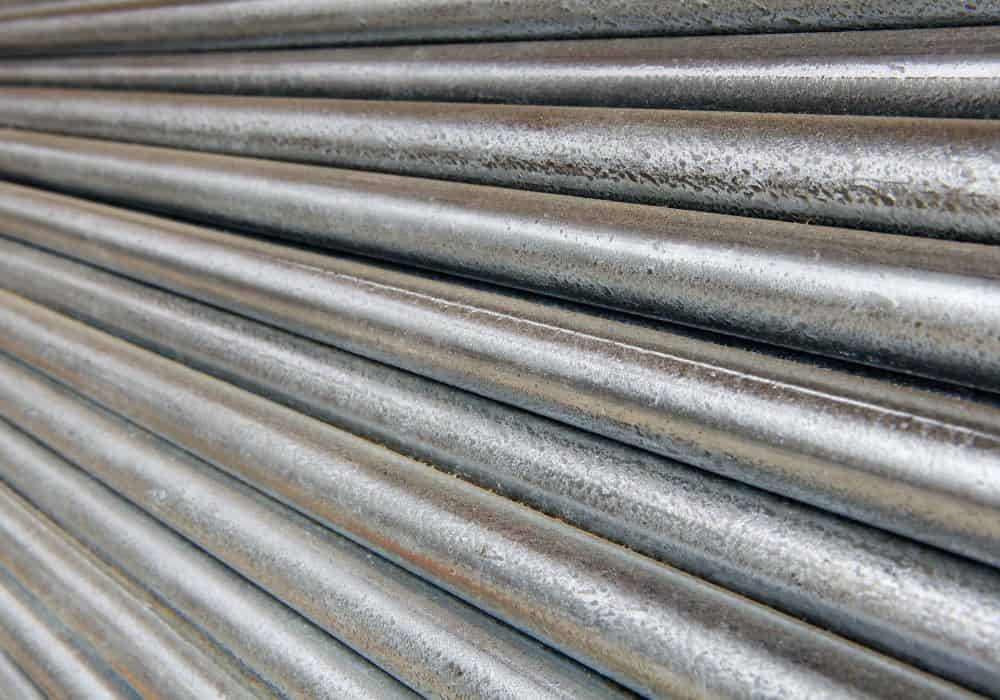
Galvanized pipes are usually found in older homes and older plumbing networks. It can be the best choice to replace or repair a small system section. But over time, we have learned that galvanized pipes suffer from internal rust and corrosion and do not carry water or work as drains, but you can still use them to carry gas.
Don’t be discouraged by their outdated reputation; galvanized pipes can still be highly effective in certain situations. That’s because anything galvanized has an additional layer of zinc added, which gives it extra protection and impact resistance.
9. Cast iron piping
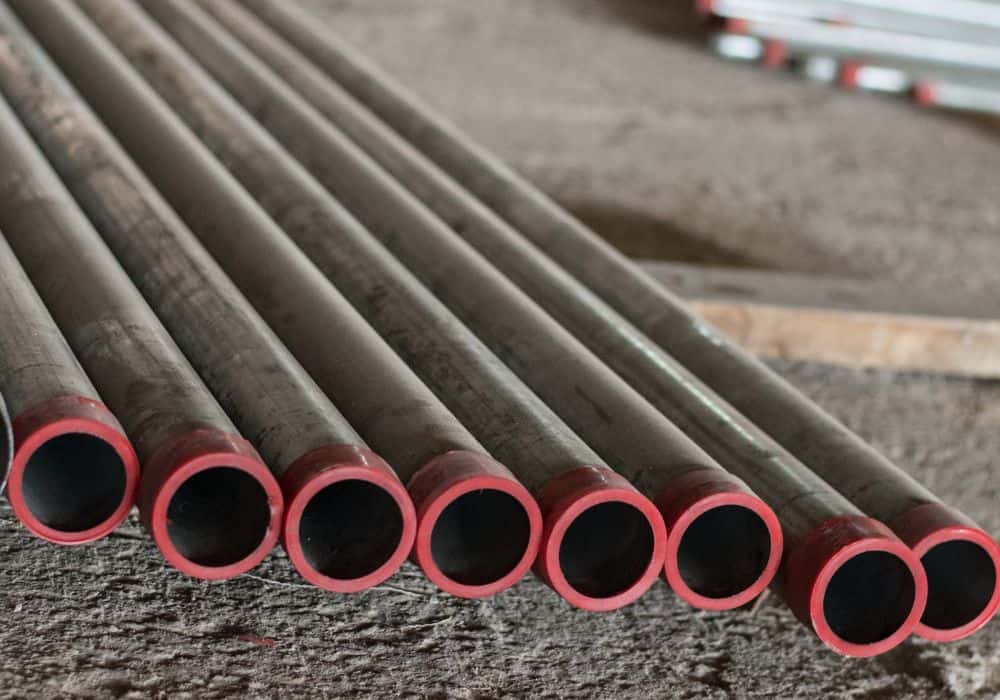
Cast iron pipes were the default piping choice back in the 1970s, and even by today’s standards, they can still make for effective plumbing pipes. One end of the pipe has a socket, and the other has a bell and spigot, making them ideal for underground plumbing and drain lines.
Cast irons are still popular because of their innate durability, strength, and relatively low price. They’re also noise-proof and can carry water and other substances almost undetectable.
Because cast iron reduces the vibrations between pipes, even if it only forms part of a system, it can help reduce any noise in rooms where plumbing may be exposed.
According to the International Association of Certified Home Inspectors, cast-iron pipes have a life expectancy of about 60 years. This means that quite a few of these pipes will be reaching their end of service in the next few years, and many retrofits will replace them. Now is the time to research whether to keep cast iron in your home or source suitable alternatives.
Conclusion
Throughout history, plumbing has changed dramatically. We have always strived for better, healthier, and longer-lasting materials to carry our water, gas, sanitation, and more to and from our homes.
Our recommendations above have explored the most popular and effective pipe types for you to consider. When considering the types of pipes, think of where they will be placed, what they will contain and at what temperature, and if they are best suited indoors or outdoors for your job.
With the right choice, your pipes will hopefully last the test of time while supporting you in your daily life.
